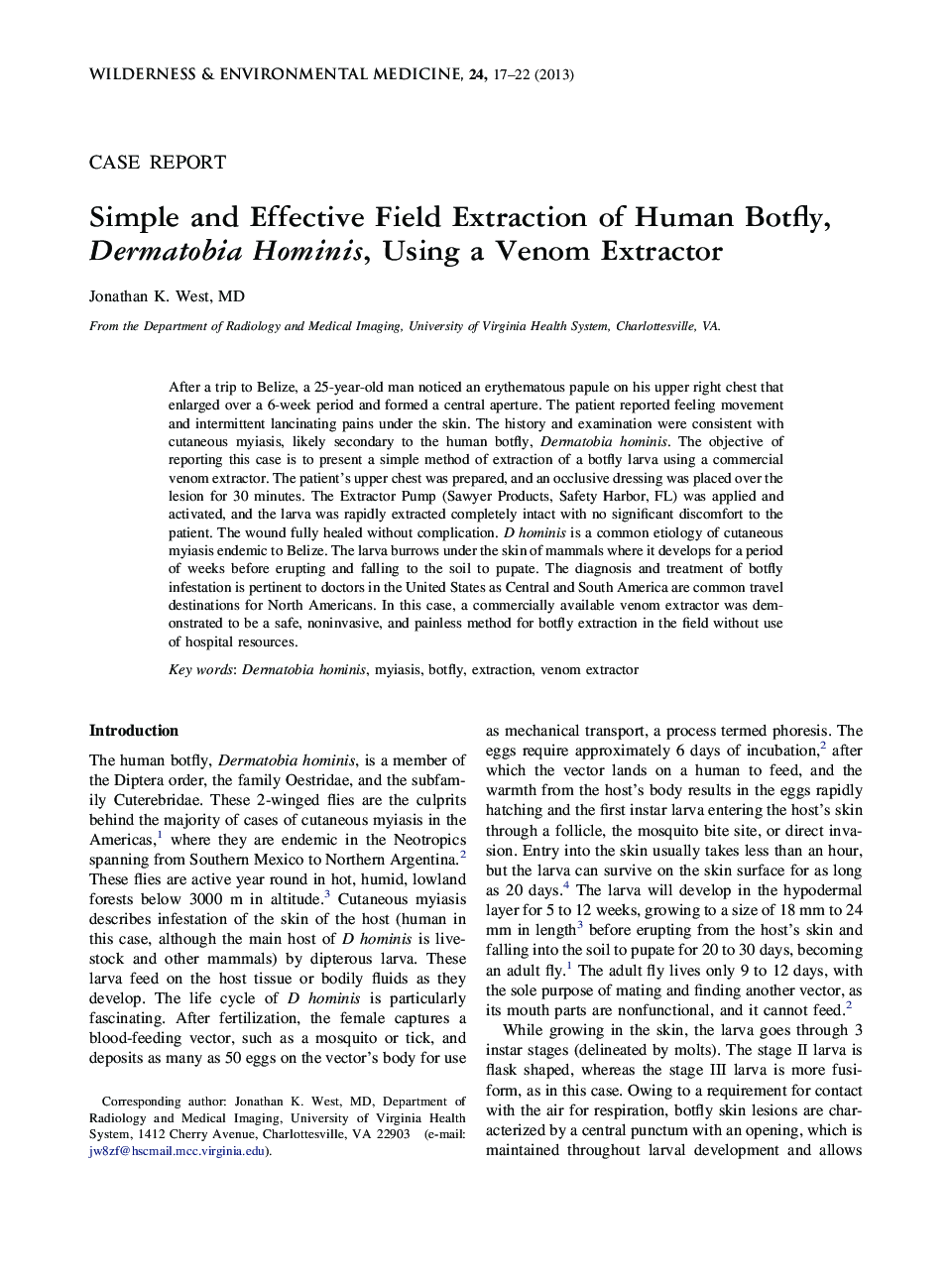| Article ID | Journal | Published Year | Pages | File Type |
|---|---|---|---|---|
| 2614244 | Wilderness & Environmental Medicine | 2013 | 6 Pages |
Abstract
After a trip to Belize, a 25-year-old man noticed an erythematous papule on his upper right chest that enlarged over a 6-week period and formed a central aperture. The patient reported feeling movement and intermittent lancinating pains under the skin. The history and examination were consistent with cutaneous myiasis, likely secondary to the human botfly, Dermatobia hominis. The objective of reporting this case is to present a simple method of extraction of a botfly larva using a commercial venom extractor. The patient's upper chest was prepared, and an occlusive dressing was placed over the lesion for 30 minutes. The Extractor Pump (Sawyer Products, Safety Harbor, FL) was applied and activated, and the larva was rapidly extracted completely intact with no significant discomfort to the patient. The wound fully healed without complication. D hominis is a common etiology of cutaneous myiasis endemic to Belize. The larva burrows under the skin of mammals where it develops for a period of weeks before erupting and falling to the soil to pupate. The diagnosis and treatment of botfly infestation is pertinent to doctors in the United States as Central and South America are common travel destinations for North Americans. In this case, a commercially available venom extractor was demonstrated to be a safe, noninvasive, and painless method for botfly extraction in the field without use of hospital resources.
Related Topics
Health Sciences
Medicine and Dentistry
Emergency Medicine
Authors
Jonathan K. MD,
